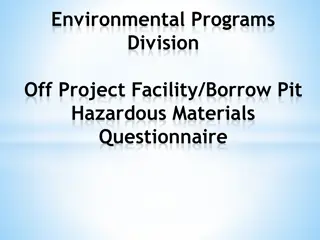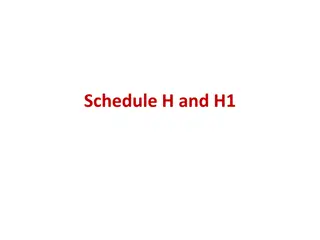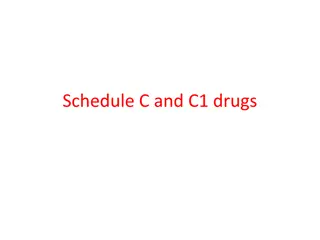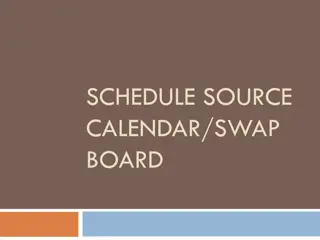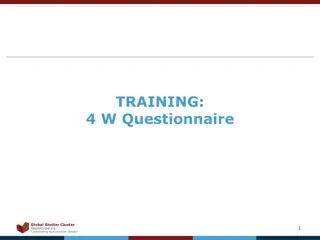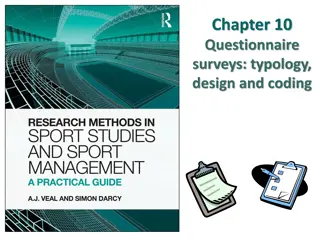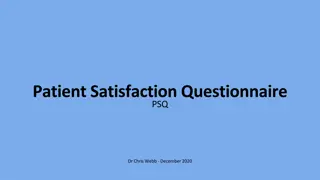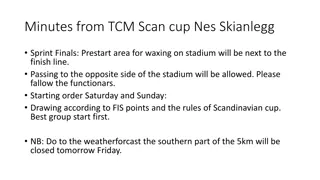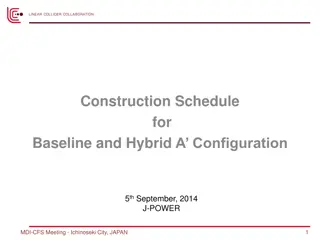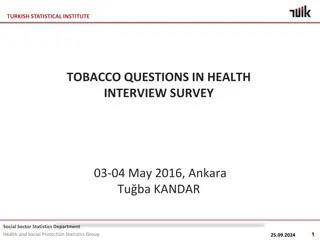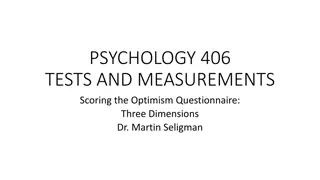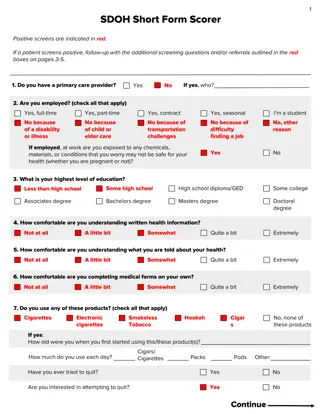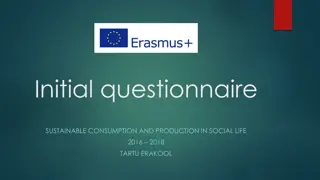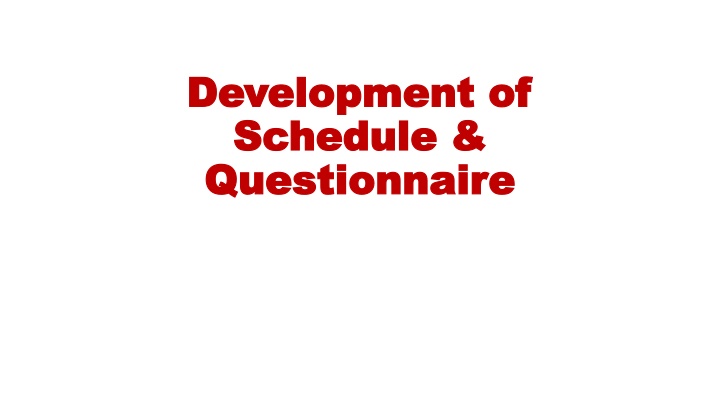
Understanding Research Instruments: Schedules, Questionnaires, and Data Collection Methods
Explore the differences between schedules and questionnaires, learn about their advantages and disadvantages, understand the key considerations when preparing a questionnaire, and discover various methods of data collection in research.
Download Presentation

Please find below an Image/Link to download the presentation.
The content on the website is provided AS IS for your information and personal use only. It may not be sold, licensed, or shared on other websites without obtaining consent from the author. If you encounter any issues during the download, it is possible that the publisher has removed the file from their server.
You are allowed to download the files provided on this website for personal or commercial use, subject to the condition that they are used lawfully. All files are the property of their respective owners.
The content on the website is provided AS IS for your information and personal use only. It may not be sold, licensed, or shared on other websites without obtaining consent from the author.
E N D
Presentation Transcript
Development of Development of Schedule & Schedule & Questionnaire Questionnaire
Schedule It is a proforma of one or more pages containing a group of questions, which are put to a person directly by the researcher or investigator and filled by the interviewer.
Schedule Advantages Interviewer can observe and study the situation Interviewer has to explain questions to respondents Schedules can be used for illiterates Disadvantages Costly & time consuming Sometimes bias creep in Problem of language
Questionnaire It is a proforma to be filled up by the respondent himself by furnishing factual information.
Questionnaire Advantages Relatively less expensive Saving of time Respondent answer at his convenience Free of interviewer bias Disadvantages Poor response (30-60 %) Cannot be used for illiterates Misunderstanding of the question Incomplete entries
Points to be considered while preparing questionnaire Size of questionnaire should be smaller than schedule Better appearance in terms of paper printing, layout etc. Clarify questions & language should be clear to the respondents Sequence: very logical, clear, lucid or ordered in systematic way
Method of collecting data Interview schedule Mailed questionnaire Email / online Distributed questionnaire Group interview Case studies Observation method Participant / Non-Participant
Selection of method depends on Objectives of the study The type of device that could be used to gather the data Type of respondents from whom you need to get the data Available resources: Money, Time and Personnel and Merits and demerits of each methods
Types of questions in the schedule/ questionnaire Closed end questions (Fixed alternatives) Open end questions
Closed end questions: These offer a choice among two or more alternatives. Dichotomous questions: Commonly used form of questions i.e. Yes or No, Agree/ Disagree and so on. Some time, a third alternative Don t know or undecided is added. Ex: Karnataka hybrid tomato is more profitable compared to local tomato Yes / No / don t know
Closed end questions: These offer a choice among two or more alternatives. Multiple choice questions: Here a direct question is asked followed by a number of alternatives. the respondent has to choose any alternative among possible choices. Ex: Whom do you consult to get agricultural information? A) AAO B) AO C) ADA D) JDA E) SMS
Criteria for a good schedule A good schedule is one, which is brief and contains only those questions, which are related to the objectives of the study It should be attractive, clear and free from spelling mistakes Questions should be arranged according to some pre-determined categories The questions should be in line with objectives and should not contain any leading suggestions, which may affect the response Simple questions, which do not require much thinking, should be placed first and thereafter-complicated questions may be placed
Criteria for a good schedule Only those information which cannot be obtained through village, revenue records or office records should be attempted through schedule Schedule should be neatly printed There should be clear-cut instructions regarding how each item in the schedule should be filled up The tendency of putting many ideas in one question should be avoided Clearly define Difficult words Schedule should be free from delicate and embarrassing questions.
Develop an Interview Schedule to Collect information from Farmers on Identified topic

